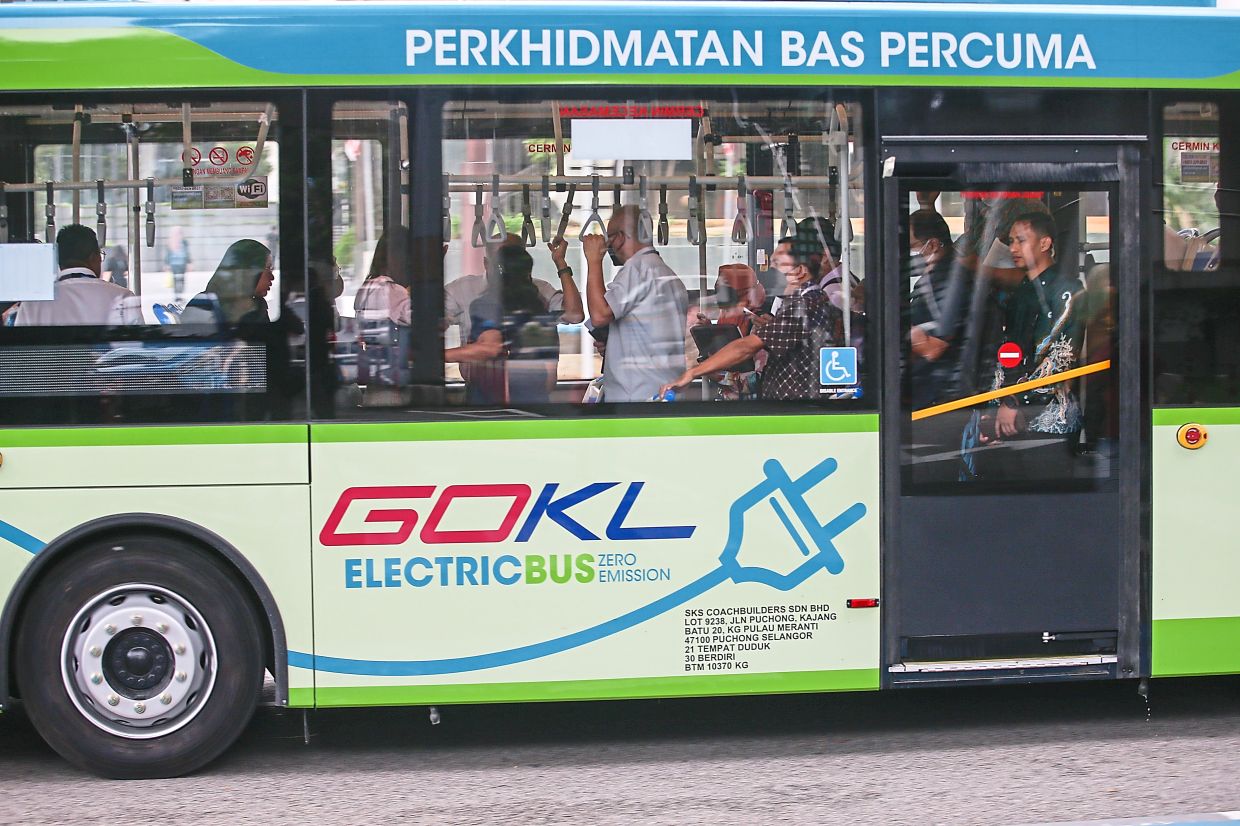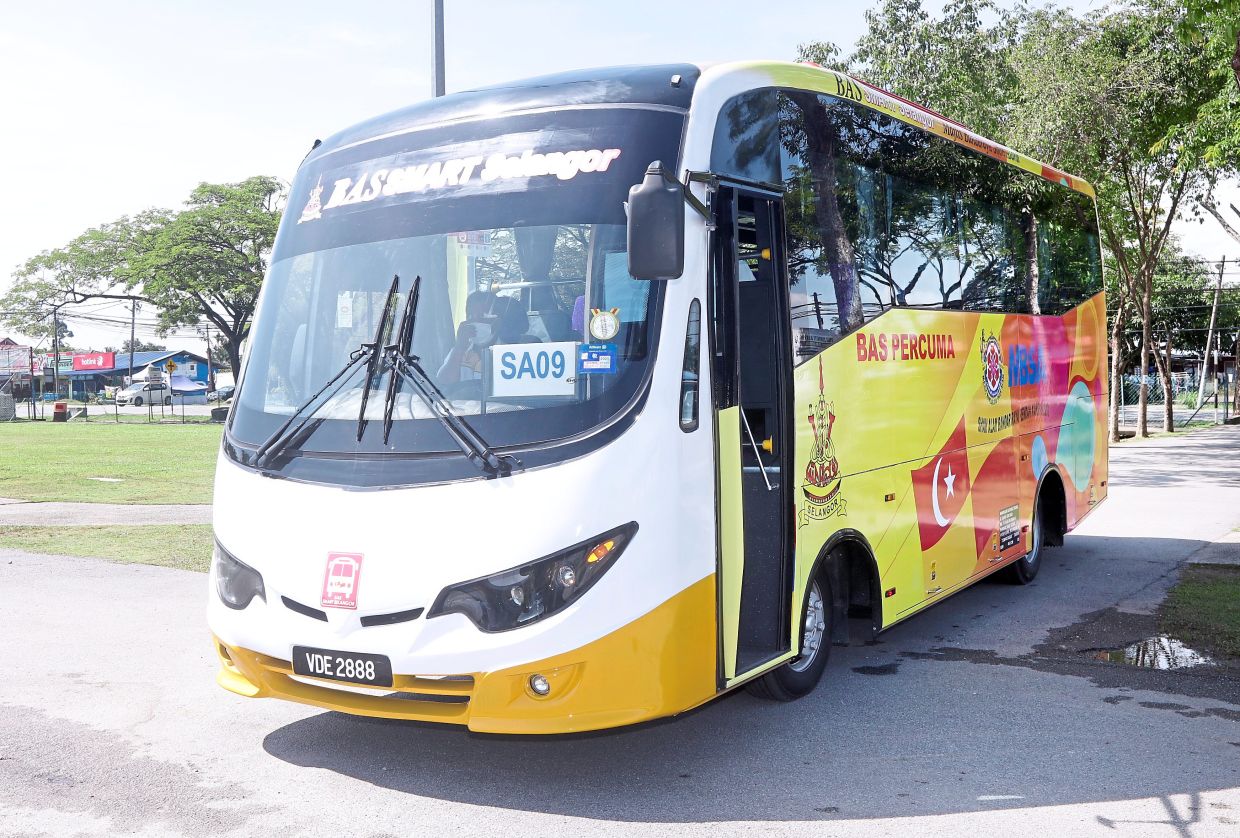There are currently 247 Rapid bus routes in Klang Valley with a total of 846 buses serving an estimated 233,239 passengers daily. — FAIHAN GHANI/The Star
Dedicated lanes, standardising schedules and better timing will encourage usage, say users
ASK commuters about bus services in Klang Valley, and they will likely express a litany of complaints, including long waits, especially during peak hours, lack of direct routes and uncertainty of schedules.
With LRT/MRT users also struggling with last-mile connectivity issues, it is no wonder that many people opt to drive, causing even more congestion on the roads.
Not surprisingly, although the recent announcement of a plan to integrate the various bus service routes in Klang Valley was warmly greeted by the public, users pointed out that it should only be the first step in improving all aspects of the public transportation system.
The initiative, announced by Transport Minister Anthony Loke on Sept 12 following an inspection of Rapid KL bus lane operations from Pandan Indah to Masjid Jamek, is part of measures to encourage more people to use buses.
He said the move would need the cooperation of the three main operators namely Rapid Bus, the free GoKL buses operated by the Kuala Lumpur City Hall (DBKL) and the Smart Selangor buses run by the Selangor government.
Loke stated that the Land Public Transport Agency (APAD) would be tasked with coordinating bus service routes in Klang Valley as part of this large-scale initiative, with support from various agencies and local authorities.
The integration move is a long time coming, say commuters, who hoped it would also lead to improving existing services, from frequencies and punctuality of the buses, to the ease of digital information access via mobile application services.
They told StarMetro that many improvements were still needed from the three bus operators to draw more commuters to use the service.
Direct routes
Setapak resident Jacky Tam, 28, said the idea of an integrated bus route was a good thing, but hoped this would lead to better connectivity.
“For example, if I want to go from Jalan Gombak to Jalan Genting Klang, I will need to change buses despite both areas being near to each other.
“It would be great if I can reach my destinations directly.”
Tam, a regular bus commuter, suggested that passengers would benefit from an integrated application that displayed all bus arrival times and stops.
“Currently, the Pulse Mobile app by MyRapid only shows Rapid buses and sometimes, it does not reflect the actual whereabouts of the buses.
“At times, when the bus has already arrived at a bus station, the application still shows its location at the previous station.
“Improvements on the application or a new application that shows different buses’ arrival times ‘live’ would help the passengers,” he said.
Tam said the overall frequency of the buses was satisfactory during off-peak hours but additional buses should be added during peak hours from 7am to 9am and 5pm to 7pm.
He also said that while overlapping buses serving an area might be good for passengers as it means higher frequency, this, however, would create redundancies among bus operators.
Sentul resident K. Darshini, 34, said the frequency and punctuality of the buses could be improved.
“Sometimes, I would take Rapid KL or GoKL buses to the city centre.
“What most passengers are facing now is the long waiting hours at the bus station.
“It is difficult to predict when the buses will arrive at a stop as they are not punctual.
“Also, some buses do not show the names of the bus stops that they would be stopping at and this would confuse first-timers.”
Wangsa Maju resident Wan Faiz Wan Zaidi, 23, suggested the standardisation of cashless payment systems for all operators by utilising Touch ‘n Go and debit cards.
“This is to reduce the congestion at bus stops to ensure a seamless transaction,” he added.
At present, only Rapid Bus uses Touch ‘n Go (via MyKad) for cashless payments, while GoKL services are free. As for Smart Selangor buses, it is free for locals, but they have to use the Scan to Ride function on the Citizen E-Payment application (CEPat).
Foreigners are charged 90sen per ride.
Avid commuter Gabriel Lim, 42, said one of the key solutions to improving bus services was expanding dedicated bus lanes.
“Currently, roads with three lanes per side, including major highways such as the Federal Highway, Middle Ring Road 2 (MRR2), and Shah Alam Expressway (KESAS), lack permanent bus lanes.
“Introducing these lanes, not just during morning peak hours but throughout the day, could significantly enhance bus service reliability.
“However, achieving this goal requires collaboration between various authorities, including the Transport Ministry, Works Ministry and the local councils.
“For privatised expressways, discussions with concessionaires are also necessary to make this vision a reality.”
Lim, who is from Kelana Jaya, added that operators should standardise the operating hours of bus services to enhance the overall public transportation experience.
“Ensuring that the first and last trips adhere to consistent schedules can prevent passengers from getting stranded.
“Currently, many routes, including Smart Selangor, have their last trips scheduled as early as 10pm, even though regular buses and MRT or LRT train services often run until around 11pm,” he added.
Selangor shifts to DRT
Any move to improve bus transport services requires the cooperation of various agencies, especially the three main bus operators in Klang Valley.
While they have expressed their commitment to cooperate on plans to integrate services, the bus operators are waiting for more information from the Transport Ministry or APAD.
In Selangor, state investment, trade, and mobility committee chairman Ng Sze Han said the state’s aim was not only to re-examine the bus routes to support the Federal Government’s plan but also to study shifting the Smart Selangor bus operation model.
“The idea involves gradually discontinuing some current routes, especially smaller roads and localised areas, which might be better served by the newly introduced Demand Responsive Transport or DRT van services as part of the Selangor Mobility concept.
“The DRT van services, characterised by its on-demand and request-based system, is hailed for its efficiency. It caters to localities situated within a 10km radius of transportation hubs.
“With this strategic initiative, the goal is to reallocate free buses to serve extended routes connecting cities within Selangor, thereby enhancing intercity connectivity,” he said.
Ng added that the proposed restructuring of the plan would be a key point of discussion during the Selangor Mobility standing committee meetings, ensuring a coordinated and effective approach to advancing public transportation services in Selangor.
The Selangor Mobility standing committee meetings that convene quarterly, he said, included the active participation of state and federal agencies such as APAD and the local council, providing a platform to report on public transportation plans and updates.
The Selangor Mobility initiative, previously known as the public transport initiative, was introduced by the state government to improve public transportation accessibility.
During the tabling of the Selangor Budget 2023 in November last year, Amirudin said a total of RM25mil was allocated to strengthen the state’s public transportation under Selangor Mobility.
Ng said there were a total of 166 buses currently, including the PJ City Bus, running in the state along 50 routes.
“However, the ridership for the Smart Selangor bus has yet to return to the pre-Covid-19 pandemic level.
“The most efficient ridership recorded was in 2019 with 43 routes transporting 56 million riders in that year.
“I believe at that time, the public transportation model in Selangor was already on track.
“However, with the pandemic and increase in number of passenger vehicles in the market in the last two years, we estimate ridership numbers will only reach a maximum of 70% of that level.”
Ng added that the Smart Selangor bus service, along with various first-mile and last-mile connectivity options like DRT vans, micro-mobility vehicles, bicycles and walkways, offered the public flexible commuting choices both before and after reaching the primary transportation routes.
“We are also aware that the positive development of the mainstream mode of transport such as the MRT3, LRT3 and East Coast Rail Link (ECRL) are ongoing.
“With MRT2 recently launched, maintaining the Smart Selangor bus service is equally important.
“The Selangor Mobility concept considers all transportation modes equally vital to sustain the entire ecosystem,” he said.
DBKL, in a statement, said its various departments recently had a meeting regarding the matter and would share data and user statistics on GoKL buses with APAD and the Transport Ministry.
“DBKL currently has 14 routes with 77 buses serving various parts of the city.
“There are an average of 30,000 passengers daily and about 918,000 monthly passengers using GoKL services.
“Besides that, DBKL also has a special application for GoKL bus services for the ease of the users to plan their journey.”
As for Rapid Bus, there are currently 247 bus routes in Klang Valley with a total of 846 buses serving an estimated 233,239 passengers daily.
However, Rapid Bus declined to comment on the integration plan at the time of reporting.









